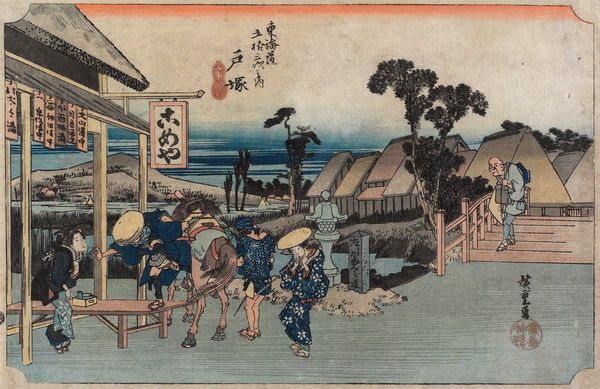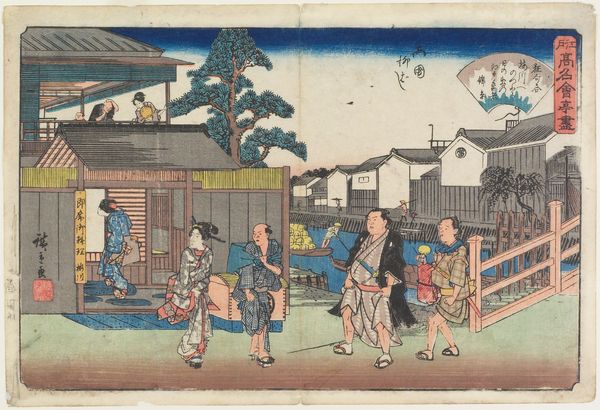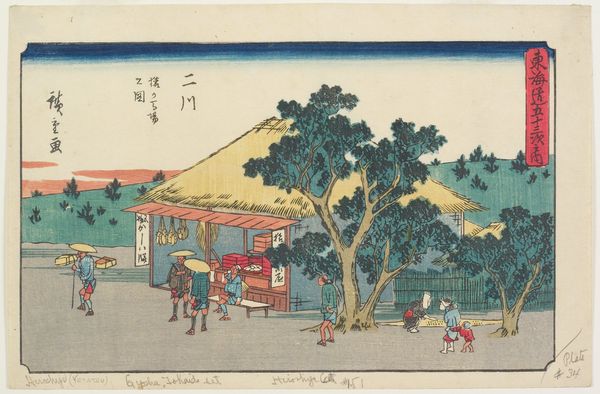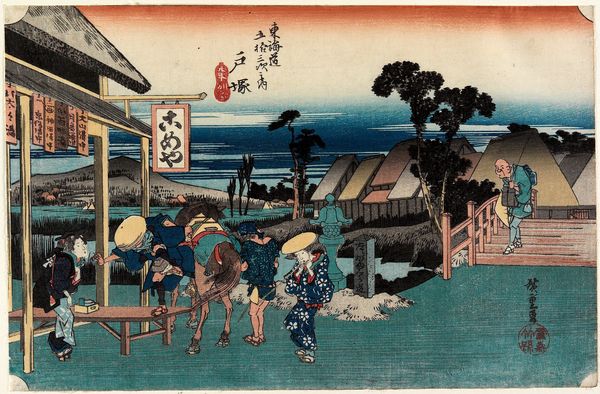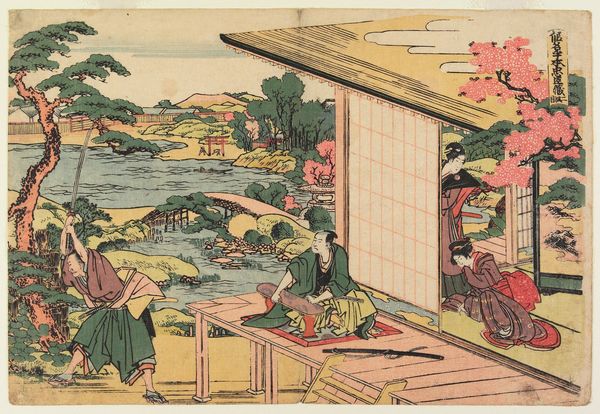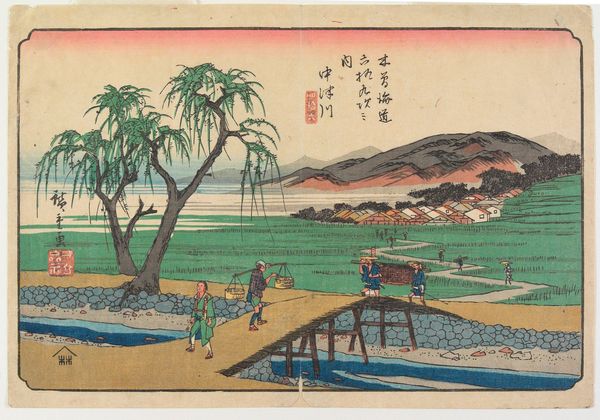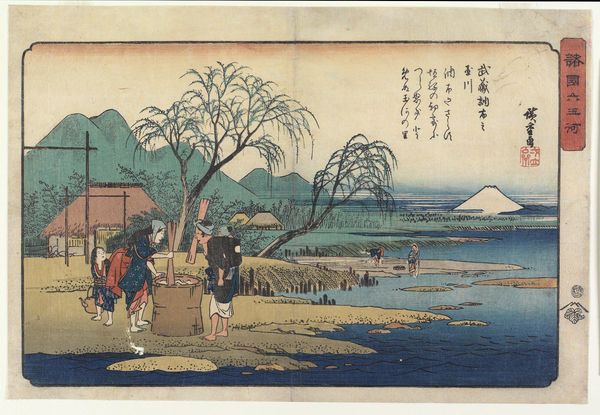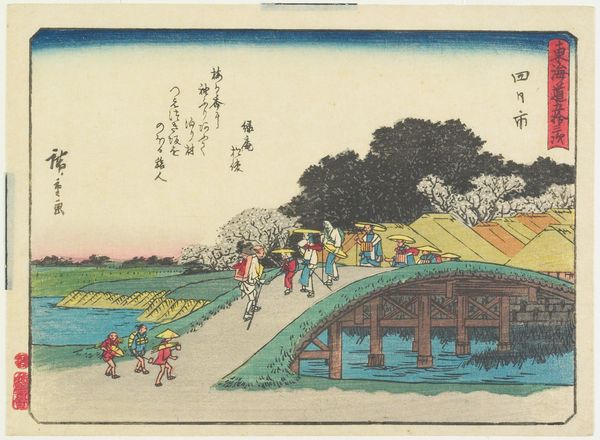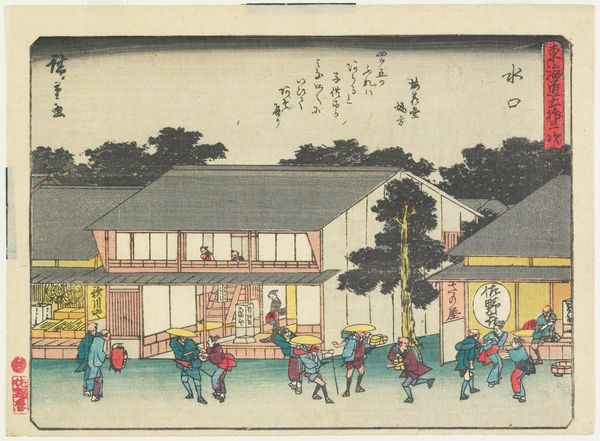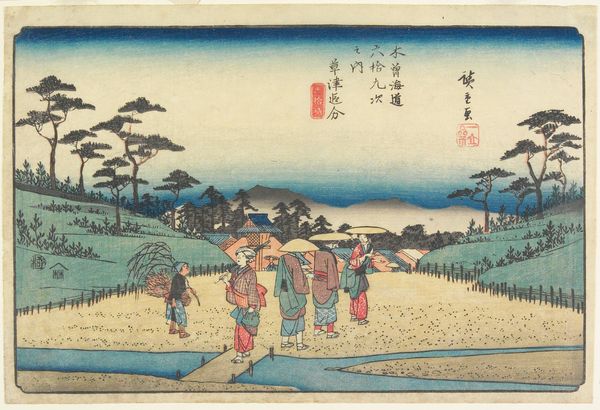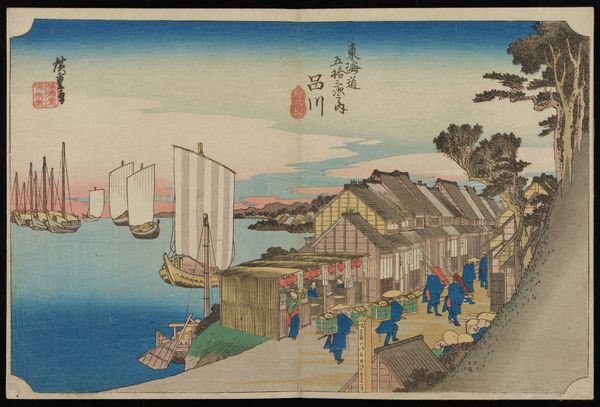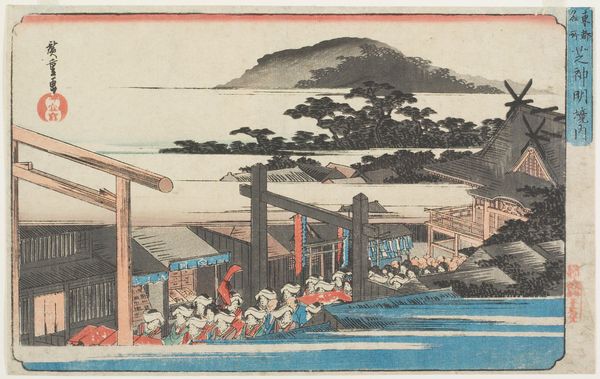
print, ink, woodblock-print
# print
#
asian-art
#
landscape
#
ukiyo-e
#
ink
#
woodblock-print
#
genre-painting
Dimensions: 9 1/2 × 14 1/4 in. (24.13 × 36.2 cm) (sheet, horizontal ōban)
Copyright: Public Domain
Curator: Here we have Utagawa Hiroshige’s “Totsuka-Motomachi Fork,” a woodblock print created around 1832-1833, part of the series "Fifty-three Stations of the Tokaido Road." Editor: It's…serene. Not static, though. The composition directs my eye so effortlessly from that bustling tea house on the left across to the bridge in the distance. It feels like a miniature stage set, and the figures frozen mid-action are the players. Curator: The organization of space is critical. Note how the diagonal of the road intersects the horizontal band of the sea. The recession into the distance is achieved through atmospheric perspective, diminishing detail, and careful color gradation, guiding our sight. The artist captures the transitory moment, suspending daily routines against this larger spatial structure. Editor: Transitory is spot on. And while the composition feels precise, almost calculated, there’s a vibrancy in those blue hues of the clothing and water, a kind of bustling humanity. I imagine it’s a visual poem of the everyday… capturing these little encounters between travelers. Curator: Indeed, these prints provided glimpses into the common experiences of those traveling between Edo and Kyoto. As genre painting, the print captures this bustling human life, yet simultaneously speaks to the underlying formalism of the medium through shape, line, and chromatic relations. Note how Hiroshige used blocks to print successive applications of color. Editor: That attention to process comes through, I think. There is beauty here in seeing that layered detail—the impressions adding depth but maintaining flatness. It’s more than just picturesque scenery, the artist's consciousness leaves this tangible, human feel to the work. It shows life. Curator: Perhaps the tension then resides precisely in that friction—between surface-level aesthetic appreciation and engagement with socio-cultural meaning and how that translates into meaning. Editor: I guess I see that duality. I'm charmed and provoked both—as I get caught up in wondering where all these travelers are headed, while seeing the clever lines bringing me through this space.
